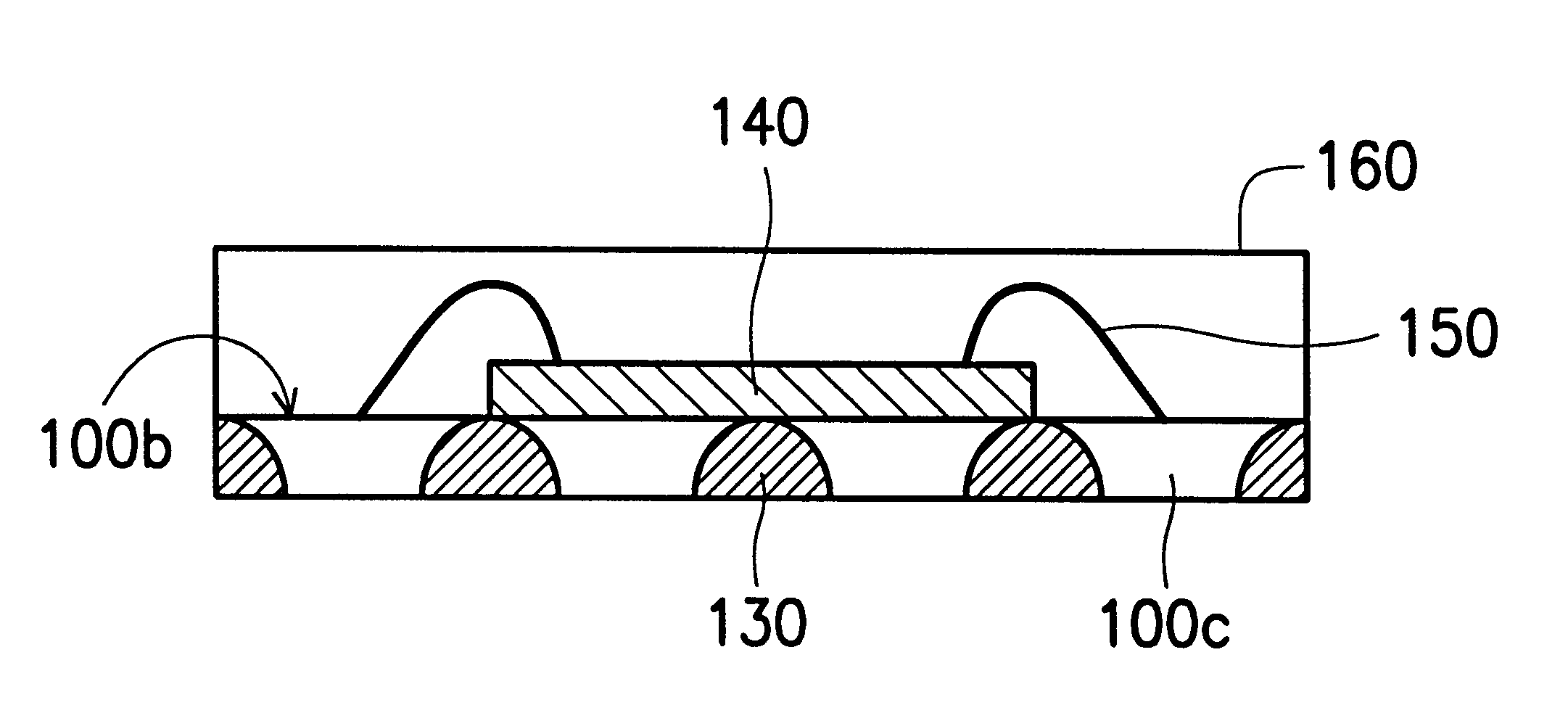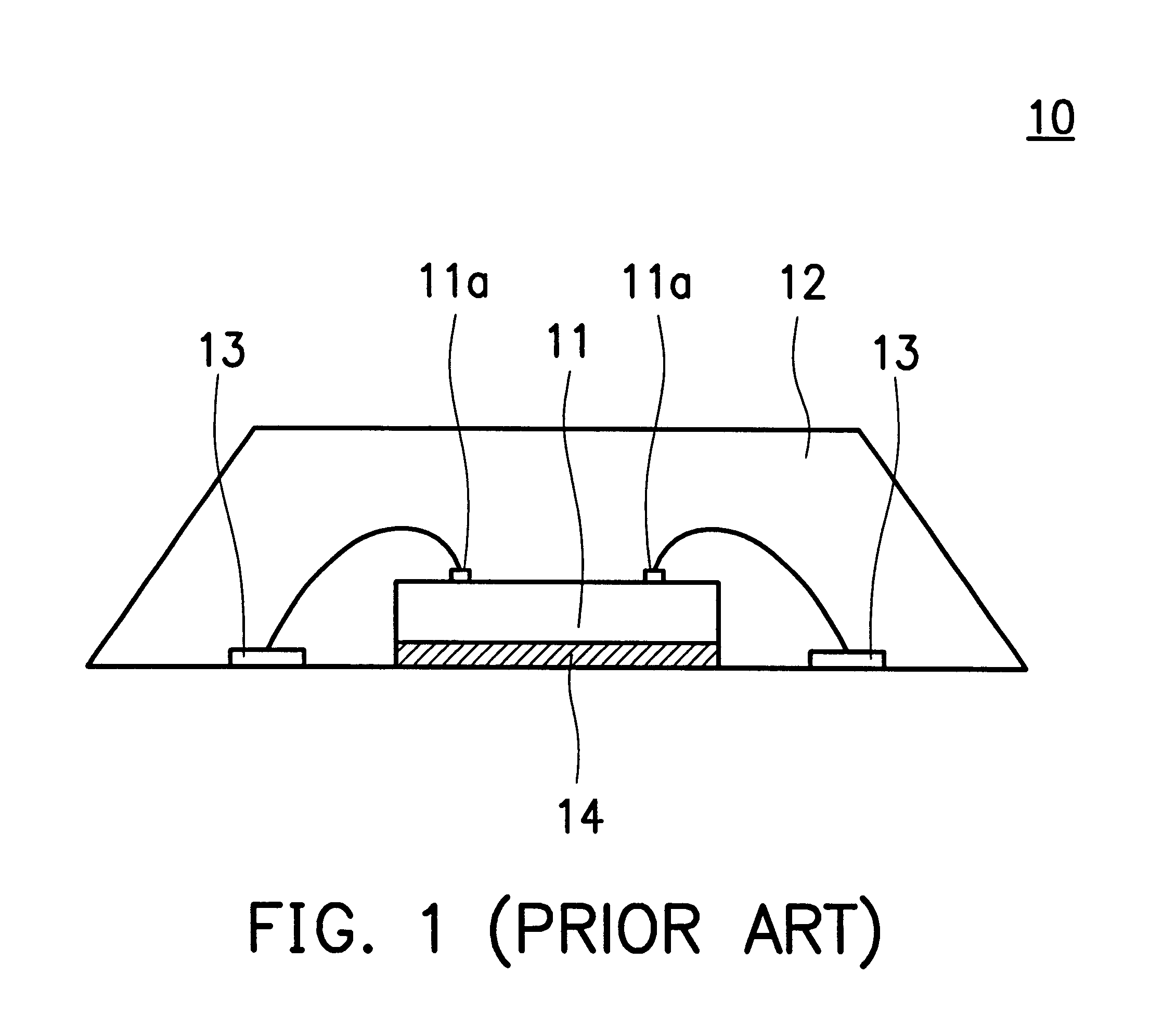Method for packaging a semiconductor chip
- Summary
- Abstract
- Description
- Claims
- Application Information
AI Technical Summary
Benefits of technology
Problems solved by technology
Method used
Image
Examples
example 2
FIG. 3A through FIG. 3G schematically depict in cross-sectional views steps involved in a method for packaging a semiconductor chip according to a second example of the present invention.
Referring to FIG. 3A through FIG. 3C, whereas steps for forming a plurality of openings in the lead region are shown with the upper portions of the openings formed larger than the lower portions of the openings. For example, referring to FIG. 3A, a conducting substrate 200 made of copper is provided with a lead region and a chip region. Then a photoresist layer 210 is coated and patterned on the top surface 200a of the conducting substrate 200. Subsequently, referring to FIG. 3B, using the patterned photoresist layer 210 as a mask, the top surface of the conducting substrate 200 is then etched to form a plurality of openings 220 in the lead region 220', wherein the etching process can be either a wet etching or dry etching process. It should be noted here that the upper portions 220a of the openings...
PUM
 Login to View More
Login to View More Abstract
Description
Claims
Application Information
 Login to View More
Login to View More - R&D
- Intellectual Property
- Life Sciences
- Materials
- Tech Scout
- Unparalleled Data Quality
- Higher Quality Content
- 60% Fewer Hallucinations
Browse by: Latest US Patents, China's latest patents, Technical Efficacy Thesaurus, Application Domain, Technology Topic, Popular Technical Reports.
© 2025 PatSnap. All rights reserved.Legal|Privacy policy|Modern Slavery Act Transparency Statement|Sitemap|About US| Contact US: help@patsnap.com



